When Terrifying Leaps of Faith Pay Off:
An Art- and Sketch-Filled Q&A with Abby Hanlon
 October 29th, 2014 by jules
October 29th, 2014 by jules
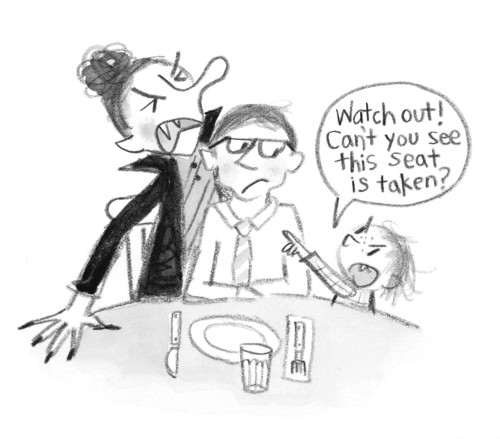
Last week at Kirkus, I wrote about two new chapter books for children, and today I’m going a bit more in depth with one of them, Abby Hanlon’s Dory Fantasmagory, released by Dial earlier this month. (I promise to have some art here at 7-Imp from the other chapter book this coming Friday.)
I’m smitten with Dory Fantasmagory, but you can read why in that column, if you’re so inclined. Today, Abby—who was featured here at 7-Imp back in 2012 at the release of her debut picture book—visits to share some illustrations from the book, some early sketches, and to talk about Dory a bit.
I thank her for visiting.
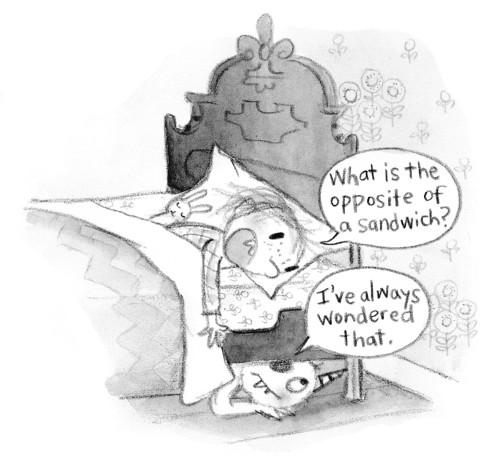
At night, Mary sleeps under my bed.”
Jules: As I read Dory, I kept thinking about how HARD it is to write for this age and not be too precious about things. Or cloying. But you didn’t do that at all. Also, the emotional honesty of the book is spot-on. Do you want to talk a bit about trying to get those things right? Did you go through a ton of drafts? Did the story come easily to you in terms of those emotional rhythms and that honesty?

Abby: Putting the story together with a strong narrative arc was difficult for me and came after I was already working with Lucia Monfried at Dial. But all the little bits and pieces of the story, I feel, almost wrote themselves. I came up with the idea for Dory and its sequel exactly a year before selling the manuscripts.
That is because I had a huge advantage –- I was writing a book about a six-year-old, and I had not one, but TWO, incredibly creative six-year-olds living in my house (credit chris). I would read them parts, ask them questions, and make revisions with them. But mostly we would just be hanging out, and some very Dory-ish thing would happen that would make us laugh, and then together we would figure out how to expand on it. My kids were constantly giving me ideas, intentionally (often too bizarre to translate) or not.
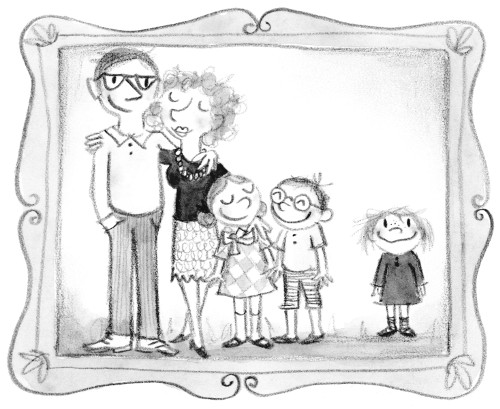
This is my family. I am the little kid.”
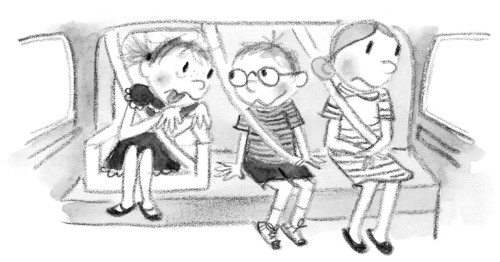
I quietly whimper like a dog to Luke so my mom can’t hear.
I raise my paws and make my eyes look droopy.”
The feeling of the story of the youngest child comes from my own childhood as the youngest of three, but all of the details and humor of the book come from my twins. I’ve always been fascinated by how my kids play imaginatively and what they find funny. The things I have done to “study” my kids while they are playing, I feel, could blur the line between being the most annoying obsessive helicopter mom and simply being a writer. For example, I’ve covertly taken videos of them in the midst of their imaginary games. I’ve taken dictation of their surrealist stories or of a long convoluted account of a game they played at recess. I’ve at times typed everything they say, as they are saying it. (They have no idea I’m doing it.). I’ve stood outside their bedroom door at night listening to their conversations in the dark. And generally, I follow them around the house saying, “Hey! What are you guys playing?” Because I really need to know.
Jules: I love how Mrs.Gobble Gracker made me think of Viola Swamp but not in a way that seemed copycat-like. Did you intend that? (I see, as I re-read your 2012 visit to 7-Imp, that you mentioned The Swamp!)
Incidentally, I love that she drinks coffee in the mornings.
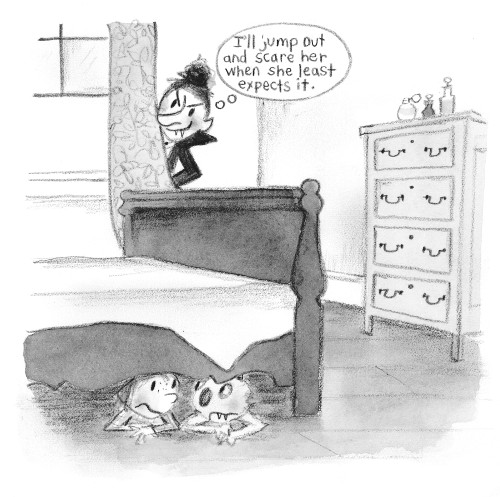
Abby: I did not intend to [reference Miss Viola Swamp], but I’m thrilled to be associated with James Marshall in any way. As a first-grade teacher, I would get so carried away reading the part of Viola Swamp that it would scare the kids (which, yes, I mentioned on my last visit to 7-Imp!) When I came up with Mrs. Gobble Gracker, my kids were really into Annie, and I was intrigued by how deliciously terrified my daughter was of Miss Hannigan. She would cover her ears and even cry for most of the song, “Little Girls.” (“Some day, I’ll step on their freckles.”) But she still wanted me to play the song.
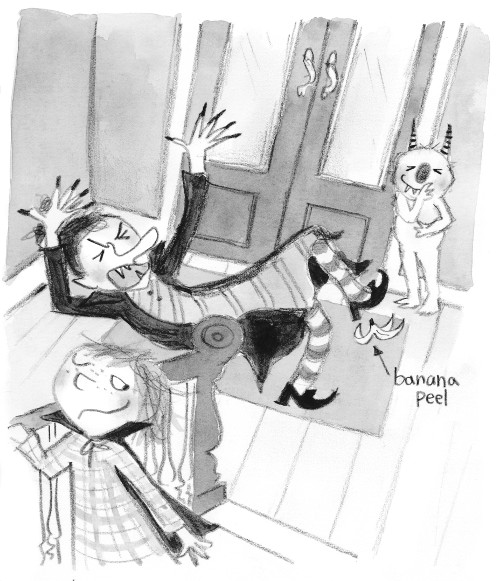
I know I was in the middle of something.”
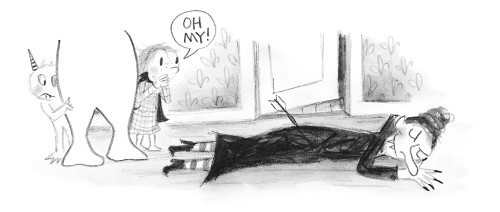
she mumbles, and then she is sound asleep.”

Miss Hannigan inspired me. And I thought about how so many fairy tales are centered around a female villain. My kids have a million picture books, but for a couple of years they mostly just wanted us to read their one book of fairy tales, the original Grimms’ tales that are gory – where Cinderella’s sisters cut different parts of their feet off to fit into the shoe, and at the end get their eyes pecked out by birds. I wanted to write a book that would interest kids on that same level. Without being quite as bloody, I used some of the fairy tale archetypes to write the story –- with a hero (Dory); a sidekick/trickster (her friend, Mary); the wise old man/fairy godmother (Mr. Nuggy); and of course the female villain, Mrs. Gobble Gracker.
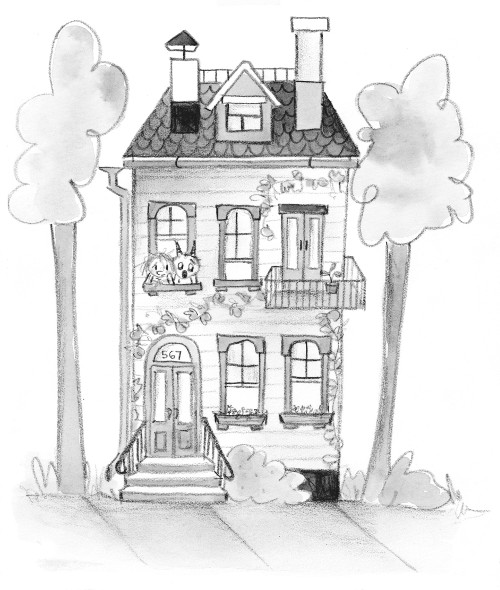
so don’t act like a baby.” I’ve never seen a monster so scared.”
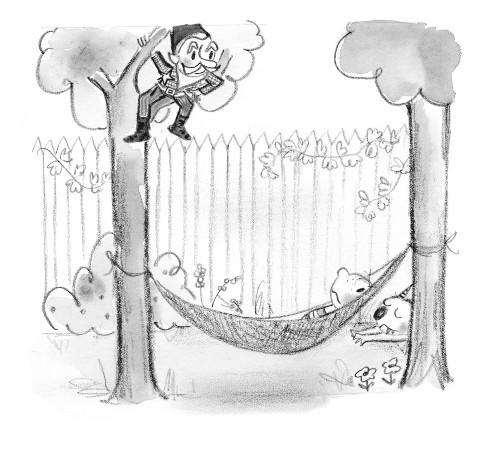
He says his name is Mr. Nuggy and that he lives in the woods.”
Jules: Can you talk about the illustrations?
Abby: The book has about 150 illustrations in it, which was incredibly challenging for me as a new illustrator. When I started the book, the scary thing was that I knew I would get better as I got to the end, and that I would have to re-do everything (somehow before the deadline). This was a problem, because I’m already a compulsive re-do’er -– which is the only way I’ve been able to learn. And I was right: The worst and best thing happened. I did improve (or stabilize), and I did end up re-doing almost everything at the end. So, for the final winter months I worked on the book, the only time I left my house was to take my kids to school and go to the grocery store.
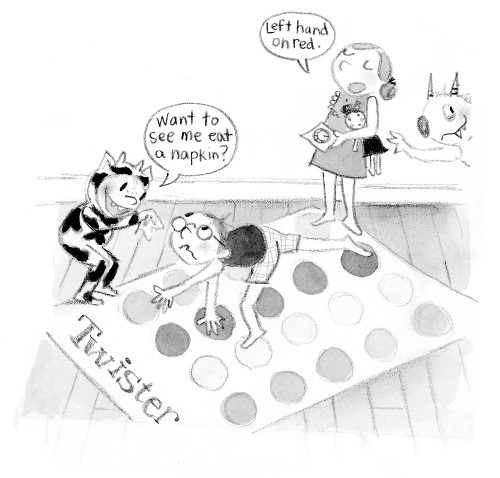
The good thing was that I was working in black and white, which I feel is my natural medium. And I think the chapter book format, where most of the illustrations are vignettes also suited my style well. I’m about to start the final art for the second book, and I think it might actually be fun this time and not a terrifying leap of faith, like last time.

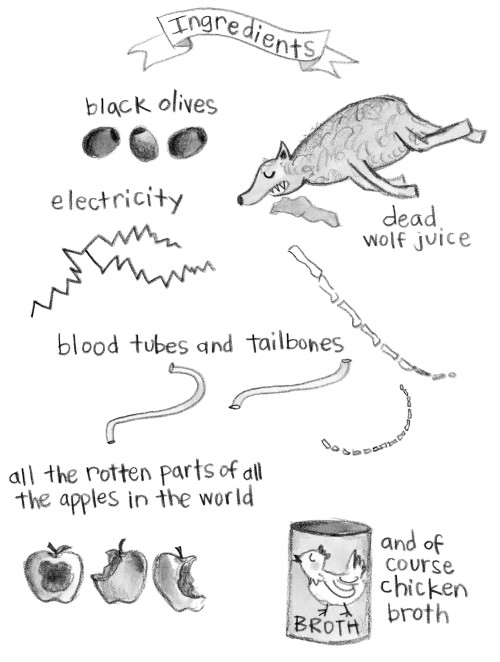
most delicious poison soup for Mrs. Gobble Gracker’s dinner.”
Jules: Yay! More books about Dory?
Abby: I am working on the sequel, called Dory and the Real True Friend, which will be out summer of 2015. In the sequel, Dory starts school and is on a quest to make a real friend. When she succeeds in finding the perfect companion (another fairy tale archetype, the princess), Dory’s siblings are convinced the friend is imaginary. At the end, the two friends triumphantly merge their separate imaginary worlds.
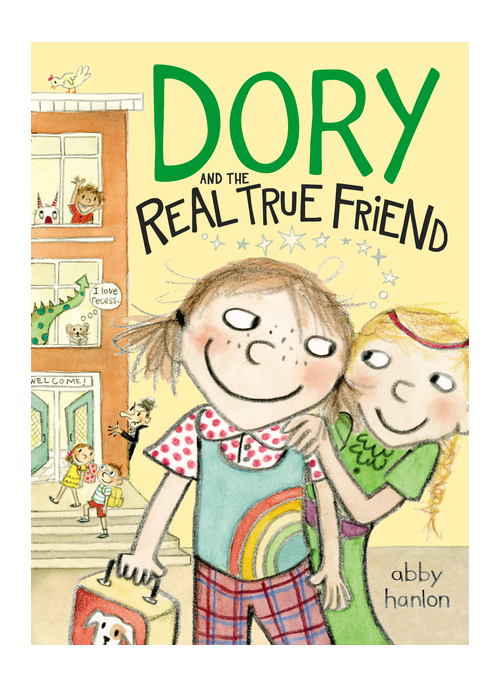
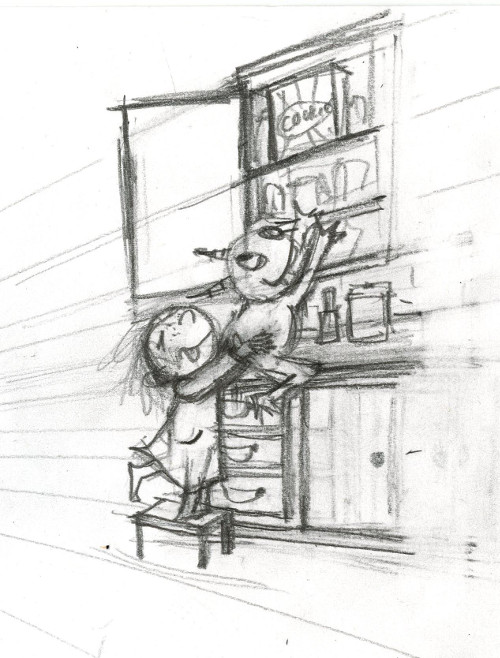
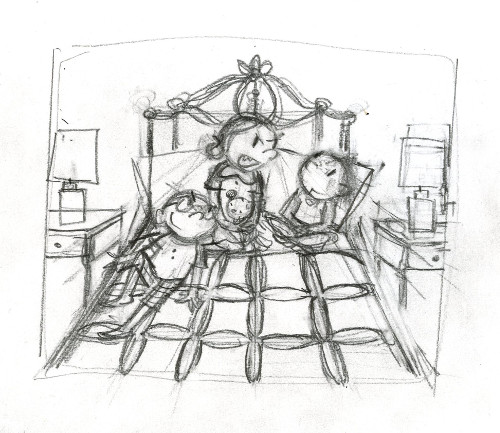
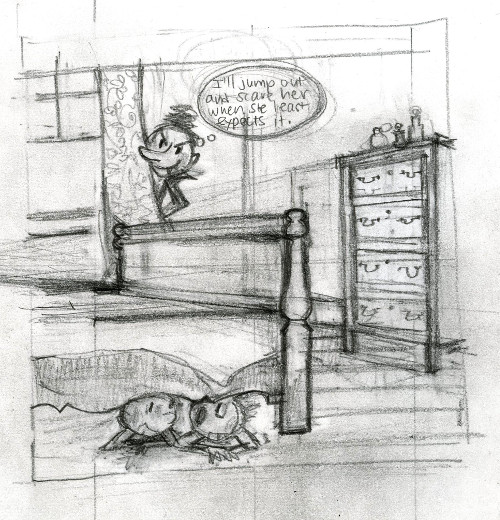
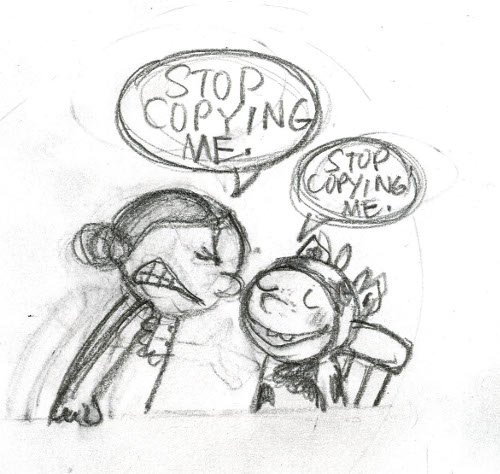
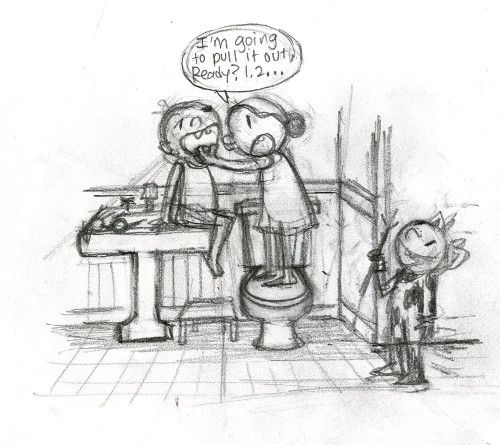
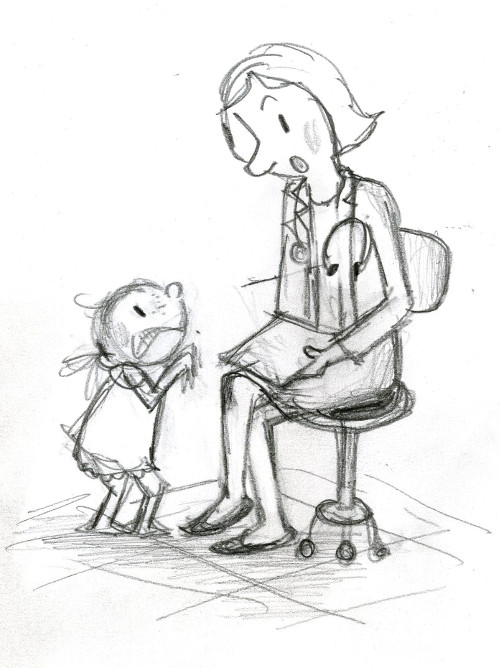
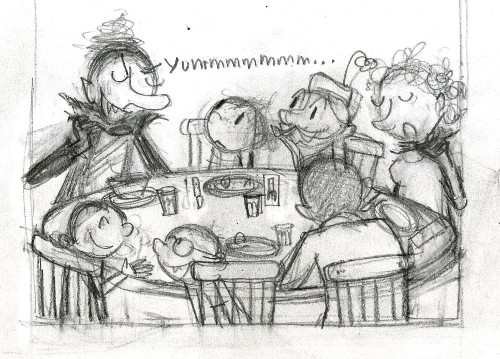
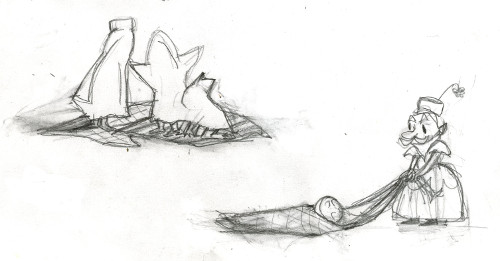
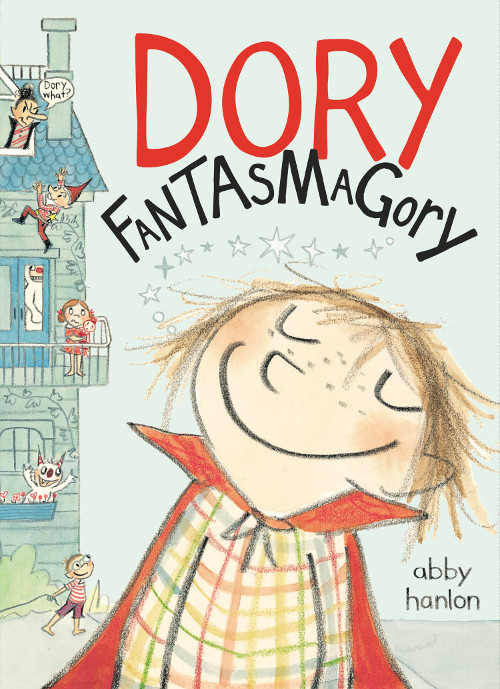
DORY FANTASMAGORY. Copyright © 2014 by Abby Hanlon. Published by Dial Books for Young Readers, New York. All images here used by permission of Abby Hanlon.

Abby is so clever! I confess, however, to being envious that she had only a year between idea and sale!
Just skimming here: These sketches are fantastic. I will wonder, all day long, what the opposite of “sandwich” could possibly be!
Rob, that line is genuinely funny to me, as is the entire book. Another thing I think this book has going for it is that Hanlon never once seems to be winking at the reader and saying, look how funny and clever I am. It’s just authentically funny stuff, like getting right inside the head of a young child withOUT the author getting in the way.
[…] October (here), Abby and I talked about the first book, Dory Fantasmagory. It’s an art-filled post, my […]
[…] me up with so many questions.” Above: Early sketch Today, author-illustrator Abby Hanlon shares some final art and early sketches from Dory and the Real True Friend (Dial, July 2015), […]